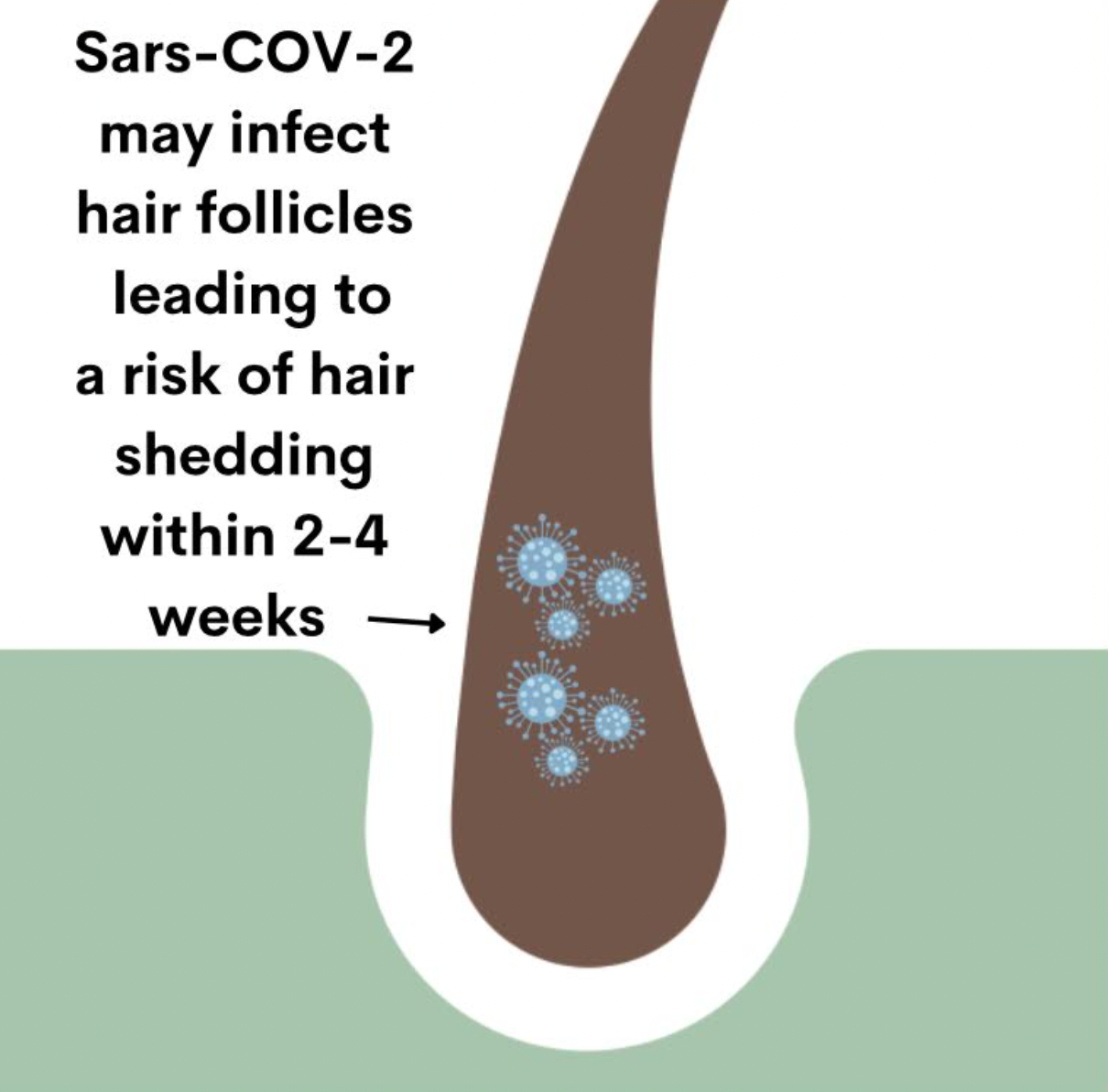Sars-COV-2 Found Inside Hair Follicles in Early Onset Post COVID Hair Loss
Early Onset Hair Loss Associated with Sars-COV-2 Insider Hair Follicles
Anywhere from 10-50 % of patients develop hair shedding after COVID 19 infection. Although it was initially thought that hair shedding follows the typical pattern of a classic ‘telogen effluvium’ (i.e. hair shedding 2-3 months after the infection), it is now understood that this mechanism does not apply to all patients. In fact, data has emerged to suggested that early onset hair loss may in fact be a type of dystrophic anagen effluvium with shedding of anagen hairs.
In the Evidence Based Hair Podcast Season 2, Episode 4 we reviewed a key study by Miola et al from Brazil. These authors set out to evaluate 203 patients with COVID19 related hair shedding. 5 % had hair loss with ‘early onset’ rather than late onset ‘classic’ shedding.
7 of these patients were assessed with trichoscopy, biopsy and a trichogram. All had a positive pull test. Trichoscopy showed empty follicles. The trichogram showed more than 10 % dystrophic anagen hairs. A biopsy in these 7 patients showed mostly anagen hairs. There was a minor increase in telogen hairs but not more than 20 % and no miniaturization and no inflammation. This was an important study to give us new data on the phenotype of the ‘dystrophic anagen effluvium’ as part of early onset post COVID hair shedding.
Mazeto et al. 2022
Authors from Brazil set out to further characterize this early onset hair loss mechanism. They described a 25-year-old woman was admitted to hospital with a 7-day history of cough, fever, shortness of breath and a positive PCR test for the COVID-19 antigen. She was required oxygen therapy, and was given systemic corticosteroids and antipyretic drugs. She had hair shedding and a positive pull test for anagen hairs.
A scalp biopsy revealed what we typically see in early onset post COVID hair loss – namely anagen hairs and the absence of inflammation in the infundibulum, isthmus and suprabulbar areas
The patient’s hairs were submitted for electron microscopy. EM of the suprabulbar outer root sheath from an anagen follicle demonstrated cytoplasmic vesicles (V) with several viral structures within, surrounded by some crown-like viral particles. In other words, there was evidence of Sars-COV-2 particles in the hair follicle
Conclusion and Comments
This is a very helpful report in our journey to understand the effects of Sars-COV-2 on hair. The authors proposed that the early onset hair shedding after COVID 19 may be characterized by features such as
a) intense SARS-CoV-2 replication in the suprabulbar outer root sheath
b) high rate of dystrophic anagen hair in the trichogram
c) non inflammatory scalp biopsies
d) fairly uninformative trichoscopy (empty follicles but no broken hairs)
The authors remind us that keratinocytes from hair follicles’ outer sheath strongly express ACE-2 and TMPRSS2 just like in the lung and other tissues. It’s likely the SARS COV -2 virus gets into the skin by binding ACE2 on keratinocytes. The virus can then replicate in hair follicle and other skin cells.
REFERENCE
Mazeto IFS et al. Ultrastructural evidence for anagen hair follicle infection with SARS-CoV-2 in early-onset COVID-19 effluvium. J Eur Acad Dermatol Venereol. 2022 Jun 20.
This article was written by Dr. Jeff Donovan, a Canadian and US board certified dermatologist specializing exclusively in hair loss.


